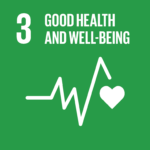Vulnerable in the heat: outdoor workers have little protection in a warming world.
In a world warming by the day, outdoor workers in the tropics are inching closer to a dangerous threshold. A study led by the United States reveals that an additional global temperature increase of just 1 degree Celsius could place the health and livelihoods of hundreds of millions at risk due to intense, humid heat.
RELEVANT SUSTAINABLE GOALS



Not enough is being done to protect Outdoor workers’ health
Currently, the Earth’s average temperature has risen by about 1.1 degrees Celsius since pre-industrial times. Crossing the threshold of an additional degree would put approximately 800 million tropical inhabitants at risk, transforming regions into zones where heavy physical labor is hazardous for more than half the year. This finding is part of a review published in March in the Cell Press journal, One Earth, which coincides with warnings from the 2023 United Nations climate change conference about the world’s failure to limit global warming to 1.5 degrees Celsius as outlined in the Paris Agreement.
The study highlights the plight of over a billion outdoor workers in tropical regions, where nearly 20% of the year already surpasses safety thresholds for heat exposure during heavy labor. Conditions such as heat stroke and chronic kidney disease are escalating, underscoring an urgent need for enhanced protective measures.
The authors of the paper call on individuals, communities, and governments to increase efforts to improve heat resilience for workers in sectors like agriculture, construction, forestry, and fisheries. They also point out significant research gaps concerning the effects of humid heat on outdoor labor. More fieldwork is necessary to tailor heat impact assessments and interventions to specific sectors and demographics, considering variables like age, health, and work conditions.
The paper also discusses the tropical belt, spanning 30 degrees north and south of the Equator, encompassing diverse ecosystems from arid deserts to lush tropical forests in Africa, South Asia, and Southeast Asia. Here, high humidity combines with heat to create particularly grueling conditions for workers. The body’s main cooling mechanism, sweat evaporation, is impeded by the moisture-laden air, making standard cooling methods less effective and increasing the risk of heat-related illnesses.
Dr. Yuta Masuda, the paper’s lead author and director of science at the Paul G. Allen Family Foundation in Seattle, explains, “In extreme humid heat conditions, the body’s sweating mechanism becomes less efficient, requiring more effort to achieve the same amount of cooling. This increased effort can lead to significant heat strain.”
Despite the pervasive risk, few countries have implemented adequate measures to protect their workforce, even as climate change intensifies heatwaves. According to a recent UN report, more than two-thirds of workers globally have faced excessive heat on the job, yet protective actions remain sparse.
Heat Exposure Impacts On Human health and Productivity
The same report notes that nearly 19,000 people die annually from workplace heat-related injuries, and an estimated 26.2 million suffer from chronic kidney diseases linked to occupational heat stress.
The report, Ensuring safety and health at work in a changing climate, says that climate change is already having a serious impact on the safety and health of workers in all regions of the world. The ILO estimates that more than 2.4 billion workers (out of a global workforce of 3.4 billion) are likely to be exposed to excessive heat at some point during their work, according to the most recent figures available (2020). When calculated as a share of the global workforce, the proportion has increased from 65.5 per cent to 70.9 per cent since 2000.
The report notes that numerous health conditions in workers have been linked to climate change, including cancer, cardiovascular disease, respiratory illnesses, kidney dysfunction and mental health conditions. The impact includes:
- 1.6 billion workers exposed to UV radiation, with more than 18,960 work-related deaths annually from nonmelanoma skin cancer.
- 1.6 billion likely to be exposed to workplace air pollution, resulting in up to 860,000 work-related deaths among outdoor workers annually.
- Over 870 million workers in agriculture, likely to be exposed to pesticides, with more than 300,000 deaths attributed to pesticide poisoning annually.
- 15,000 work-related deaths every year due to exposure to parasitic and vector-borne diseases.
Heat risks are numerous and include heat exhaustion—marked by symptoms like dizziness and headaches—which is generally non-serious if cooling occurs within 30 minutes. However, heatstroke, a severe medical emergency characterized by a body temperature exceeding 40.6 degrees Celsius, can cause permanent damage or death. Other health conditions, such as respiratory and cardiovascular diseases, can worsen with heat exposure, increasing the likelihood of accidents and injuries in temperatures above 38 degrees Celsius.
This urgent issue underscores the need for comprehensive strategies and interventions to protect vulnerable workers and adapt to an increasingly inhospitable climate.
Lead image courtesy Zhaojiankang via Getty Images Pro
You may also be interested in :
Heat Exposure’s Heavy Toll : India Loses 191 Billion Labor Hours in 2022 Alone, Lancet Highlights


